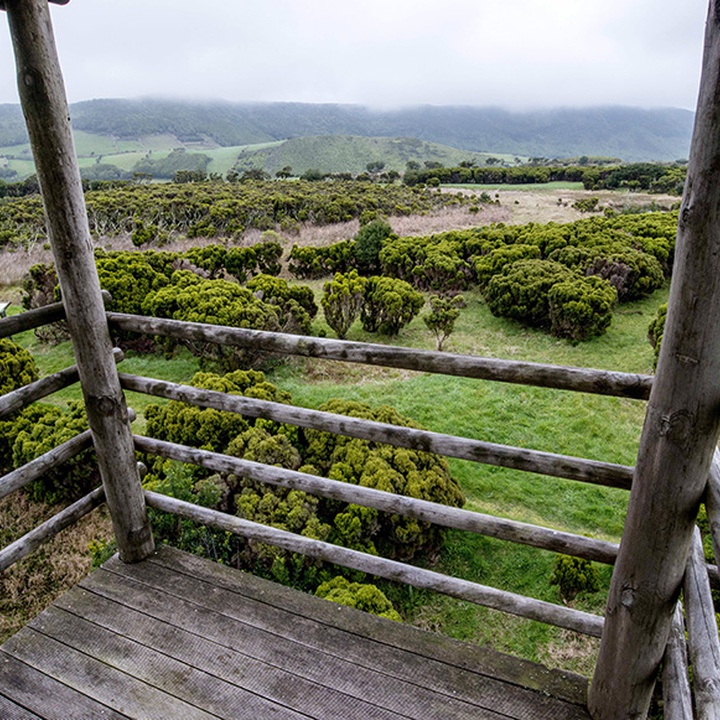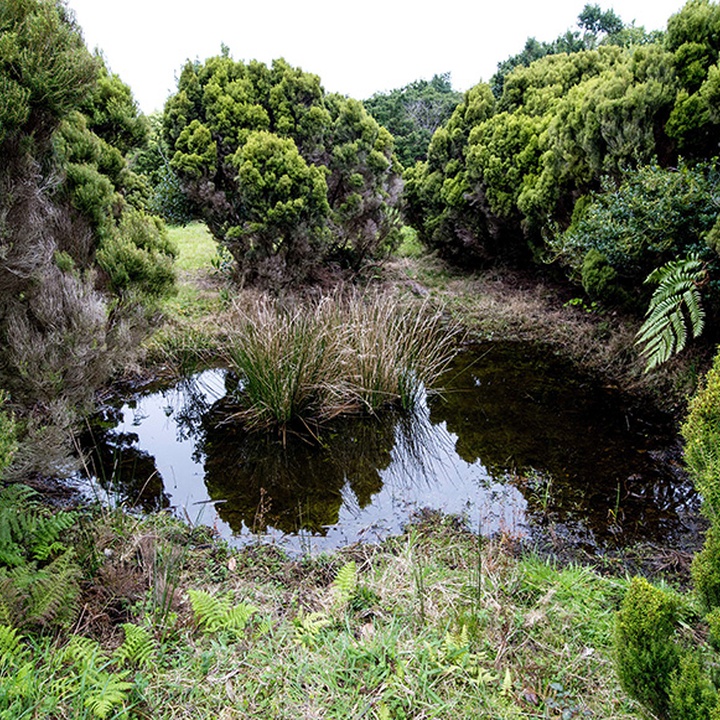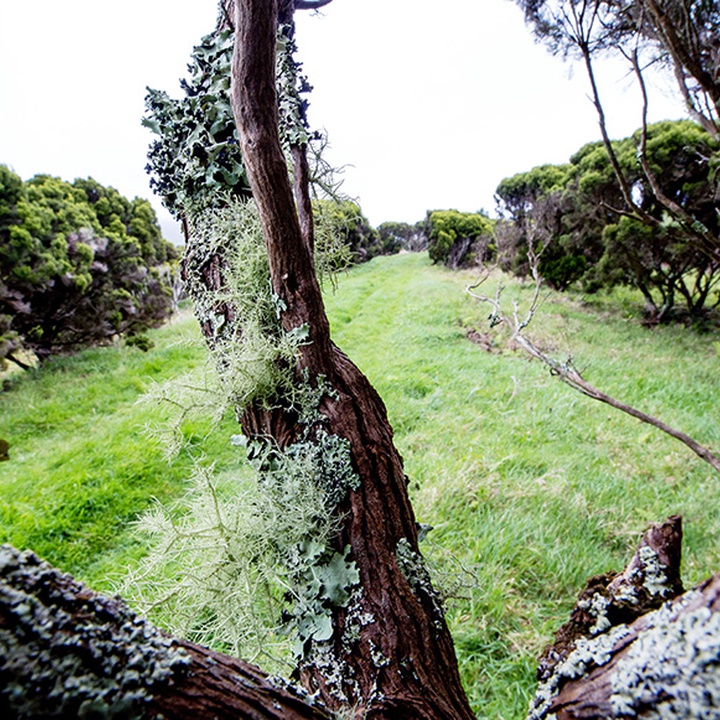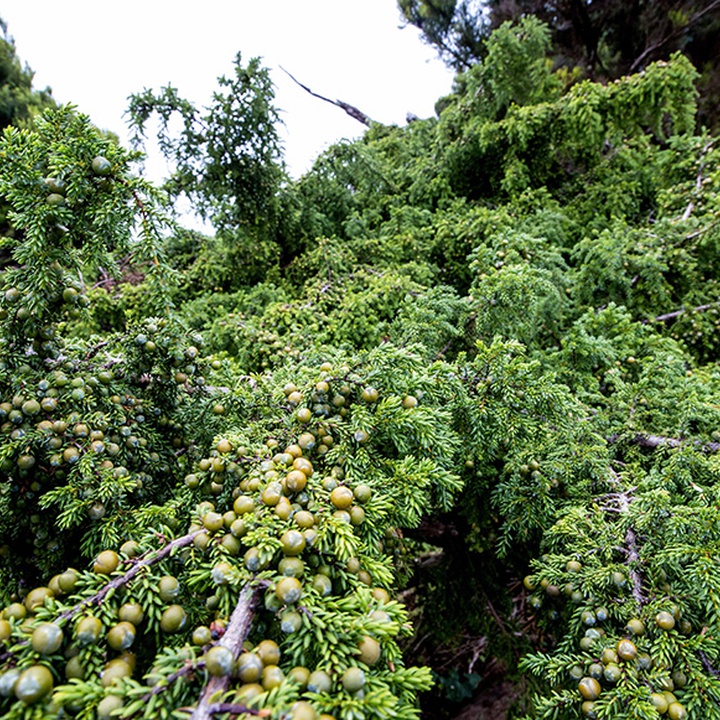Text size:
Faial Botanic Garden
Pedro Miguel Centre
Focused on the conservation of habitats and species characteristic of the humid and hyper-humid Azorean Laurel Forest, the Faial Botanic Garden created, in 1995, a new centre with an area of about 60 thousand m².
This centre, open to visitors by appointment, is located in the parish of Pedro Miguel, in a thalweg area on the eastern slope of the island of Faial, at an altitude of approximately 400 metres.
At the time of its acquisition, this area consisted of a large piece of pastureland with approximately 50 thousand m² of gentle to flat slopes, with some semi-natural residual patches of Azorean Laurel Forest and Sweet Pittosporum (Pittosporum undulatum) – an invasive alien species – and an imposing area of 10 thousand m² of peatbog associated with Azorean Heather (Erica azorica) and small temporary ponds of high conservation importance. This importance led to its inclusion in the list of Biotopes of the programme CORINE – Coordination of Information on the Environment, in 1988, which served as the basis for the creation of the Natura 2000 network (a network for the conservation of the biological and ecological diversity of the Member States of the European Community).
In 1996, for experimental and research purposes, a pioneering and ambitious project was started, to reintroduce the Laurel Forest and the endemic heaths that once existed in the area and to recover the peatbogs. To accelerate the process of natural regeneration of the forest, around 8000 plants of different species were reintroduced.
This project included a series of works before planting, namely the eradication of invasive vegetation; the modelling of the land and the creation of a system of paths, which aimed to make the area more dynamic and appealing for future visitation; the creation of a drainage system that would make it possible to create microclimates with different humidity conditions for the different species' requirements; the collection of specimens, cuttings and seeds of the species to be reintroduced in the nature; and the creation of vegetation curtains resistant to strong winds to protect the more sensitive species.
Finally, in 1998, the first phase of planting was concluded, being necessary, since then, continuous monitoring and maintenance of the habitat, through, for example, the control of the invasive vegetation that tends to proliferate, and the constant reintroduction of new species or more specimens of already existing species.
Besides the research value, this area has a fundamental role in the conservation of species characteristic of higher altitude habitats. The Azorean Forget-me-not (Myosotis azorica), from the island of Flores, is an excellent example of successful reintroduction. The fact that it has been kept in cultivation at the Pedro Miguel Centre since 2005 allowed its reintroduction into its natural habitat on the island of Flores in 2015, an island where it has not been observed in the wild since 1999.






